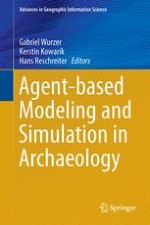
2015 | OriginalPaper | Buchkapitel
1. Explaining the Past with ABM: On Modelling Philosophy
verfasst von : Mark W. Lake
Erschienen in: Agent-based Modeling and Simulation in Archaeology
Aktivieren Sie unsere intelligente Suche, um passende Fachinhalte oder Patente zu finden.
Wählen Sie Textabschnitte aus um mit Künstlicher Intelligenz passenden Patente zu finden. powered by
Markieren Sie Textabschnitte, um KI-gestützt weitere passende Inhalte zu finden. powered by